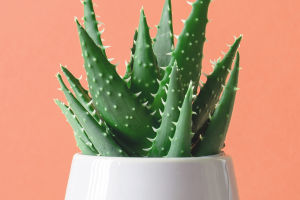Hydroponics, the art of growing plants without soil, has gained significant popularity in recent years.
This innovative cultivation method offers several advantages over traditional soil-based gardening, such as precise nutrient control, reduced water usage, and faster growth rates. Let's delve into the world of hydroponic plants, exploring their unique characteristics and the benefits they bring.
What are Hydroponic Plants?:
Hydroponic plants are those cultivated in a soilless environment, where the roots are submerged or exposed to a nutrient-rich solution. They derive all their essential nutrients directly from water, eliminating the need for soil as a growing medium.
This method utilizes various hydroponic systems, including nutrient film technique (NFT), deep-water culture (DWC), and aeroponics, to provide a controlled environment conducive to plant growth. By delivering nutrients directly to the roots, hydroponics allows for optimized absorption, resulting in vigorous growth and increased yields.
Advantages of Hydroponic Plants:
Hydroponic plants offer numerous advantages that make them increasingly popular among gardeners, farmers, and researchers. Firstly, this cultivation method provides precise control over nutrient delivery, ensuring plants receive the optimal balance of essential elements required for growth.
Additionally, hydroponics significantly reduces water usage compared to traditional soil-based agriculture, as the system recirculates water and minimizes wastage. This water efficiency makes hydroponics particularly beneficial in regions facing water scarcity or drought conditions.
Furthermore, hydroponic plants grow faster than their soil-based counterparts due to the readily available nutrients, ideal pH levels, and constant moisture provided by the hydroponic systems. This accelerated growth translates into shorter crop cycles and increased productivity. Moreover, the controlled environment of hydroponics minimizes the risk of pests, diseases, and weed infestations, reducing the need for chemical pesticides and herbicides.
Types of Hydroponic Systems:
Hydroponic plants can be grown using various systems, each with its own unique characteristics. The nutrient film technique (NFT) involves a thin film of nutrient solution flowing over the roots, ensuring constant contact and nutrient uptake.
Deep-water culture (DWC) suspends plants in a nutrient solution, allowing their roots to access oxygen-rich air while absorbing the necessary nutrients. Aeroponics, on the other hand, involves suspending the plants in a mist or aerosol of nutrient solution, providing excellent oxygenation and nutrient absorption.
Other hydroponic systems include ebb and flow (also known as flood and drain), where the nutrient solution floods the root zone intermittently, and the wick system, which uses a wick to transport the nutrient solution to the plant roots. Each system offers its own advantages and may be chosen based on the specific requirements of the plants being grown and the available resources.
Hydroponic plants represent a revolutionary approach to cultivation, offering precise nutrient control, increased water efficiency, faster growth rates, and reduced reliance on chemical inputs. This method has gained popularity in both small-scale gardening and large-scale commercial farming due to its potential for year-round production, higher yields, and environmentally friendly practices.
With ongoing advancements in technology and the growing demand for sustainable food production, hydroponics will likely play a pivotal role in the future of agriculture, enabling us to cultivate greenery with precision and efficiency while mitigating the challenges posed by conventional farming practices.


